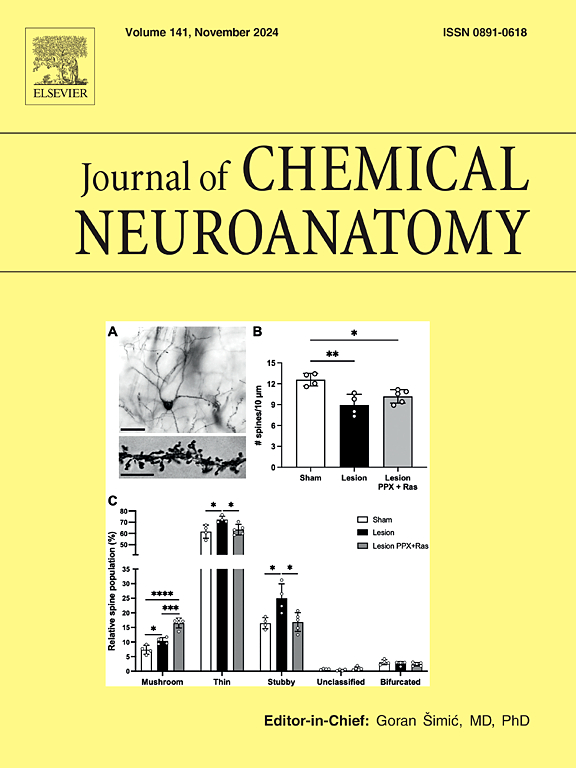Sex-dependent endozepinergic regulation of ventromedial hypothalamic nucleus glucose counter-regulatory neuron aromatase protein expression in the adult rat
Abstract
The hypothalamic brain cell types that produce estradiol from testosterone remain unclear. Aromatase inhibition affects ventromedial hypothalamic nucleus (VMN) glucose-stimulatory nitric oxide (NO) and glucose-inhibitory γ-aminobutyric acid (GABA) transmission during insulin (INS)-induced hypoglycemia (IIH). Pure GABA and NO nerve cell samples acquired by laser-catapult-microdissection from consecutive rostro-caudal segments of the VMN were analyzed by Western blot to investigate whether regional subpopulations of each cell type contain machinery for neuro-estradiol synthesis. Astrocyte endozepinergic signaling governs brain steroidogenesis. Pharmacological tools were used here to determine if the glio-peptide octadecaneuropeptide (ODN) controls aromatase expression in GABA and NO neurons during eu- and/or hypoglycemia. Intracerebroventricular administration of the ODN G-protein coupled-receptor antagonist cyclo(1−8)[DLeu5]OP (LV-1075) decreased (male) or enhanced (female) VMN GABAergic neuron aromatase expression, but increased or reduced this profile in nitrergic neurons in a region-specific manner in each sex. IIH suppressed aromatase levels in GABA neurons located in the middle segment of the male VMN or distributed throughout this nucleus in the female. This inhibitory response was altered by the ODN isoactive surrogate octapeptide (OP) in female, but was refractory to OP in male. NO neuron aromatase protein in hypoglycemic male (middle and caudal VMN) and female (rostral and caudal VMN) rats, but was normalized in OP- plus INS-treated rats of both sexes. Results provide novel evidence that VMN glucose-regulatory neurons may produce neuro-estradiol, and that the astrocyte endozepine transmitter ODN may impose sex-specific control of baseline and/or hypoglycemic patterns of aromatase expression in distinct subsets of nitrergic and GABAergic neurons in this neural structure.

 求助内容:
求助内容: 应助结果提醒方式:
应助结果提醒方式:


